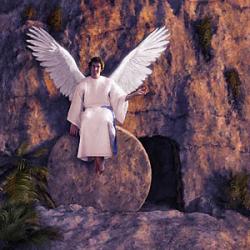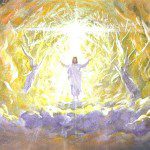Most modern Christians believe that Jesus' teachings were unique, that he claimed to be the only begotten Son of God, and that only through believing in him can one attain salvation. These matters have nothing to do with the historical Jesus, however. The Jesus of history and the Christ of faith are two entirely different people, one historical, the other mythical.
If you strip away all the layers of mythology that are superimposed on the historical Jesus by the anonymous Christian evangelists who wrote the canonical Gospels, it becomes clear that Jesus' message about the Kingdom of God has dramatic parallels to teachings found in Hinduism, Buddhism and Taoism. And when we read the Gnostic Gospels, we will also come to realize that Gnostic Christianity also held much in common with the religions of the East.
There is a profound difference between the religion of Jesus and the orthodox religion about him. What most Christians fail to realize is that the historical Jesus was a mystic. While orthodox Christianity teaches that the Kingdom of God is a perfect world that God will usher in at the end of time, Jesus taught that the Kingdom is a present reality that exists both within us and all around us.
The Gospel story of Jesus begins with his own profound spiritual transformation which took place in the River Jordan. On this occasion, as he rose from the water he suddenly found himself in a completely different reality. It was if the skies had split apart and the Spirit (the "breath" of God) had descended from the heavens "like a dove," and settled upon him or, as one extra-canonical account has it, "entered into him." Then comes the voice of God saying (in the Gospel of Luke's version), "You are my beloved son. On this day, I have begotten you."
In other words, Jesus was reborn on this day. Jesus discovered that he was one with God on this day. Those versed in mystical language can hardly miss the implications of this story. While the setting and words may not be historically accurate, it is clear that Jesus had a mystical experience that utterly transformed him. Was that experience anything like what Zen Buddhists call Satori? Was it like what other Buddhists call Nirvana, or what Hindus call Samadhi?
We can't answer those questions, of course--except through inference. Immediately following his experience, Jesus began teaching. And that teaching was about a new reality, a new state of consciousness, which he called the "Kingdom of God."
People started following Jesus around because he taught with an authority that didn't come from scripture, but from a personal and direct connection to the Source of being Itself.
Again in Luke's Gospel, Jesus tells his followers, "The Kingdom of God is within you." That can only mean that the "Kingdom" is a state of consciousness. But Jesus also tells his followers that the Kingdom can only be recognized, and entered into, but those who have "eyes to see"—by those who have profound spiritual insight.
In The Gospel of Thomas, Jesus goes one step further. Here he says, "The Kingdom of God is within you, and it is also all around you." This suggests that the Kingdom is a divine Presence (like the Tao), and that this Presence exists everywhere, and in all things—if only we are able to recognize it.
Jesus' followers asked how they could enter the Kingdom, and he told them that they must enter through the narrow gate and walk the path less traveled. They had to be willing to let go of everything in the material world in order to purchase the pearl of great price. If they wanted to enter the Kingdom they had to be utterly transformed, and this transformation was like being born anew. They had to be able to see reality in the direct way newborn children are able to see it before their perception is influenced by society.
But unlike the historical Buddha, who "woke up" in a country and a religious culture that was entirely accepting of anyone who attained a higher state of consciousness, Jesus "woke up" in a religious culture that did not understand or tolerate mystics and mysticism. So Jesus used metaphors and analogies to explain himself, but very few people understood what he was trying to say. Even his own family thought he had gone insane.
While the Buddha taught and trained his disciples for forty-five years after his enlightenment, barely a year passed between the day Jesus "woke up" and the day he was crucified. He had no time to establish his teachings, train followers, or found a community. His closest disciples were still puzzled by him, and later Christians misunderstood him altogether.
Some of Jesus' authentic teachings were preserved, and found their way into the canonical Gospels. But like wheat from chaff, they must be sorted out from all the words the Gospel authors invented and put into his mouth.
Modern New Testament scholars have done a lot of sorting over the past two centuries, but they still disagree about who Jesus really was. Today, many see him as a kind of "cynic-sage"—a wisdom teacher who practiced faith healing. Very few scholars see Jesus as a mystic who taught what Aldous Huxley called the "perennial philosophy."




